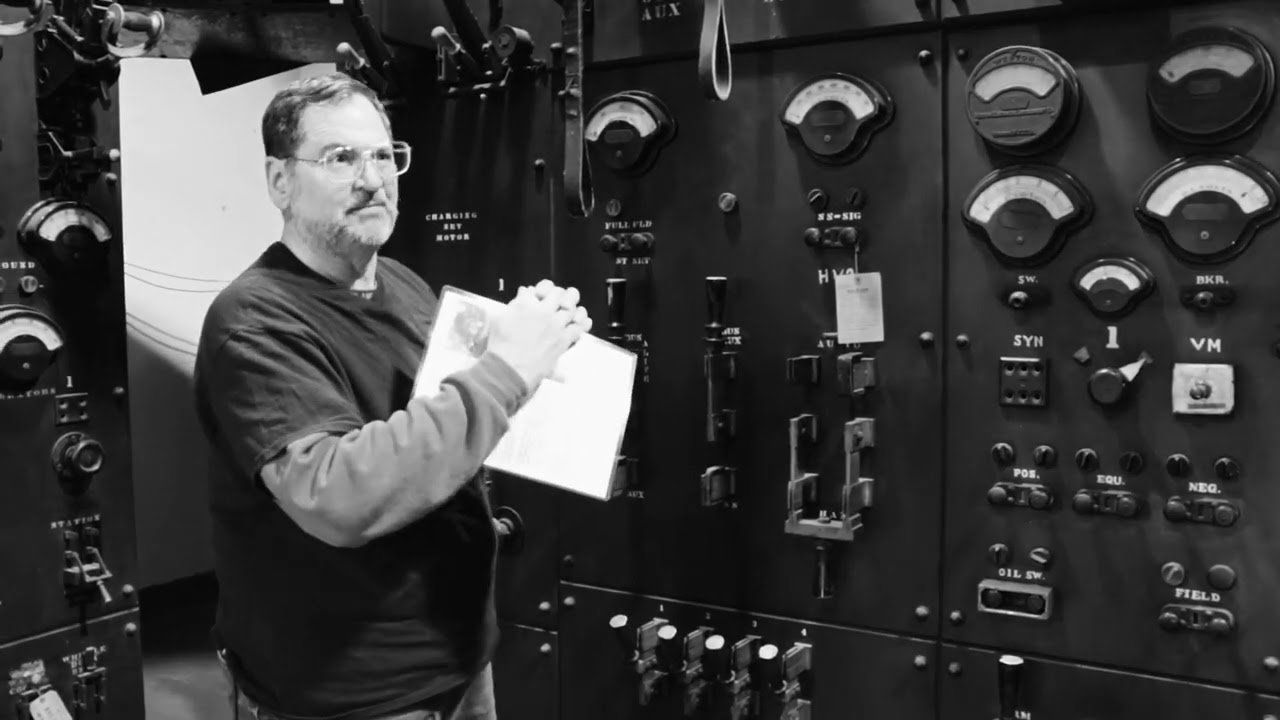The Most Interesting Thing About Stephen Colbert's Monologues Is The Wall Behind Him
A behemoth from the heroic age of power engineering stirs to life in the New York City subway’s Substation 13

On Broadway, a few blocks north of Times Square in New York City, visitors flock to the Ed Sullivan Theater. The theater is currently home to television’s The Late Show with Stephen Colbert, and nearly every week night, Colbert takes to the famous stage to tape a new comedy monologue in front of a live audience. But right around the corner from the illuminated marquee of the Ed Sullivan Theatre, another building draws a steady, if small, crowd of devotees. This building is Substation 13, and it’s been a vital cog in the running of New York’s MTA subway system since 1904.
The star attraction of Substation 13 is an enormous rotary convertor weighing 45 tons with a spinning amature 3 meters in diameter, dubbed Rotary #1. Trains in the NYC subway drive their electric motors by tapping a third rail that is energized with 600 volts of direct current. But electricity generated by the power company is transmitted over the grid as alternating current, so the subway must convert this AC power to DC, and do so at wattage levels powerful enough to speed trains full of people beneath the streets. Today, this job is done in Substation 13, and other MTA substations, by nondescript grey cabinets full of solid-state rectifiers. But for decades, it was the job of converters like Rotary #1.
These converters essentially pair an AC motor with a DC generator on the same shaft. AC power at 25 hertz is fed into the enormous windings, the convertor spins at 250 revolutions per minute, and up to 1,500 kilowatts of DC power emerges from the other side. The converter and its connection to the third rail of the subway are controlled using a set of panels, each over 2 meters tall, that are studded with the kind of dials and knife switches that most people associate with the laboratories of old-school mad scientists. Convertors would be spun up and connected to subway lines as required to handle shifting power needs over the course of the day.
Rotary #1 was in operation until 1999, when the local power company stopped supplying 25-hertz AC power. The engineer who took the convertor off-line for the last time was Robert Lobenstein. Lobenstein later was a protagonist in the restoration of Rotary #1, and he now gives tours of Substation 13 (tickets can be obtained via the MTA’s museum website).
Stephen Cass is the special projects editor at IEEE Spectrum. He currently helms Spectrum's Hands On column, and is also responsible for interactive projects such as the Top Programming Languages app. He has a bachelor's degree in experimental physics from Trinity College Dublin.